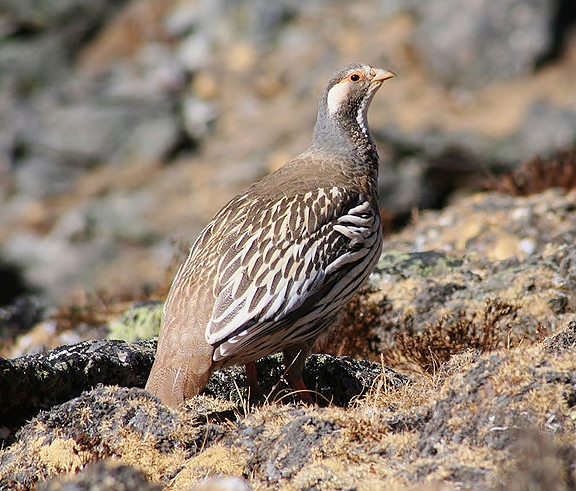 |
| Photo by Rémy Lecolazet (Oiseaux) |
Common name:
Himalayan snowcock (en); galo-das-neves-dos-Himalaias (pt); tétraogalle de l’Himalaya (fr); perdigallo himalayo (es); Himalayakönigshuhn (de)
Taxonomy:
Order Galliformes
Family Phasianidae
Range:
This species is found across the Himalayas, from eastern Afghanistan and northern Pakistan, through northern India and Nepal and north into western China and eastern Kazakhstan.
Size:
These birds are 54-74 cm long and have a wingspan of 86-97 cm. They weigh 2-3,6 kg.
Habitat:
The Himalayan snowcock is found in high, open, steep mountain slopes, between the tree-line and the snow-line, mostly in alpine grasslands and rocky areas. They occur at altitudes of 3.600-4.600 m.
Diet:
They feed on plant matter such as rushes, tubers, leaves, young shoots, berries, grasses and grass seeds.
Breeding:
Himalayan snowcocks breed in April-July. They are monogamous and nest in a depression on the ground, lined with dry grasses and feathers, situated amongst tussocks of grass, and often protected by rock or boulders, or in caves. There the female lays 6-12 olive or brown eggs with reddish-brown blotches, which she incubates alone for 25-28 days while the male stands guard. The precocial chicks leave the nest soon after hatching and follow the parents until the nest breeding season.
Conservation:
IUCN status – LC (Least Concern)
This species has a very large breeding range and is described as widespread. Although the Himalayan snowcock is hunted for food the population is suspected to be stable in the absence of evidence for any declines or substantial threats.







